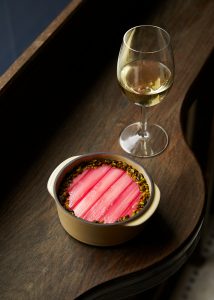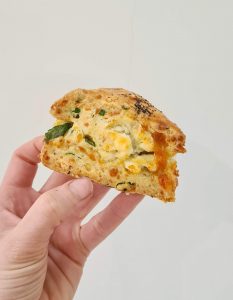The executive chef at The Mandrake reflects on bringing South America to London
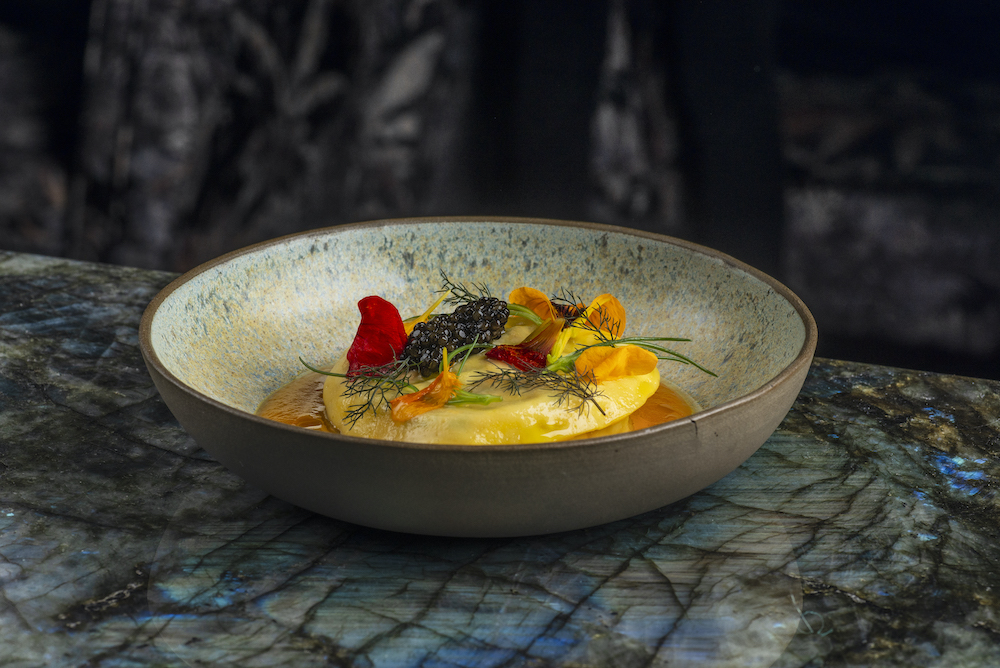
In the first year of the pandemic, when hospitality was suspended in limbo, George Scott-Toft flew to Argentina, Chile and Peru when it was safe to do so. The chef was on a reconnaissance mission to soak up the culinary cultures of Buenos Aires, Santiago and Lima, and bring back his learning for The Mandrake’s (then) new restaurant concept, YOPO. “There’s a lot you can find from just witnessing things,” he notes, reflecting on the trip. “Street scenes, the way people move, how the produce is presented in markets… We took things away from each country and they now have a place on the menu.”
Inspired in particular by the work of Rodolfo Guzman, the Chilean chef patron of Boragó, Scott-Toft’s lean offering is one in which UK ingredients, classical techniques and South American and Mexican flavour pairings are left to sing, with little manipulation or processing. So, while you can find slow cooked Elwy Valley Welsh lamb shoulder, the joy is that it’s paired with adobo and white beans, corn tortillas and guacatillo. This summer, the restaurant is curating a special version of its menu for the hotel’s terrace, Jurema, including an al fresco botanical Sunday brunch. There are few places in London where you can enjoy tacos and ceviche under a tumble of hanging jasmine and passionflower, and we’d recommend doing so with a glass of low-intervention Argentinian wine in hand.
Port caught up with George Scott-Toft to discuss the lasting impact of his travels, as well as authenticity and tactile eating.
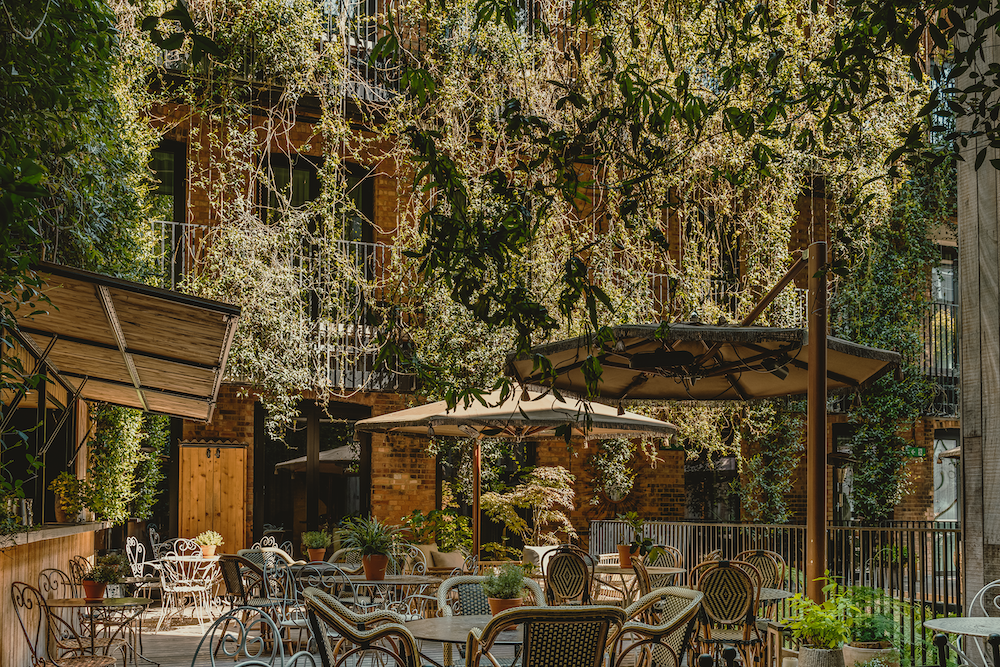
When did you first fall in love with cooking?
I grew up in a region called The Bay of Plenty in New Zealand. My family moved there in 1989 to a rather neglected orchard and slowly converted it into an organic orchard where we raised animals and grew oranges, mandarins, avocados, plums and feijoas (a type of guava very common in New Zealand). Since then, I have always had an interest in food. It helps that both my parents are great cooks, too. I also spent many school holidays with my uncle, Pete, who had a very cool restaurant in Auckland.
What were some of your gastronomy experiences out in Argentina, Chile and Peru?
All three countries are extremely different in terms of cuisine, but all three share some similar culinary characteristics. Argentina was the most traditional, with a lot of Italian, French and Spanish influence. For example, we had a great lunch of veal parmigiana et obrero in the Boca district, which opened in 1910 and catered for thousands of Italian labourers arriving in Argentina. We also had a traditional drink there, a blend of Fernet Branca, and Coca-Cola, called a Fernando, which was excellent and unusual.
Peru has so many different styles of cuisine, all of which I found interesting. On our first night there, we visited a traditional café, Bar Cordano. I was very surprised when we ordered a simple dish of what read on the menu as ‘chicken spaghetti’. It was so delicious. We asked the waiter how it was cooked and she told us they prepare a lot of the cooked dishes using a wok, which gives the dish something of the traditional Chinese flavour, ‘WokHei’. Peru has a lot of Chinese ‘Chifa’ cuisine due to the large influence of Chinese immigrants in the late 19th century. There is a lot of Japanese influence in Lima – for example, Nikkei cuisine is very common. I wasn’t expecting both cultures to have played such a large part in the style of food, especially in Lima.
Chile has an amazing style of cuisine which stems mainly from a combination of traditional Spanish cuisine and Chilean Mapuche culture. We had a standout meal at the restaurant Boragó in Santiago. Chef Rodolfo Guzman is known for zero-kilometre sourcing and using indigenous ingredients. Everything about the experience at Boragó was incredible. We entered the rear of restaurant by mistake because we could smell the lamb they had cooking on a type of spit, and the very friendly sous chef greeted us like old friends. The exceptional service and great food continued throughout the entire meal.
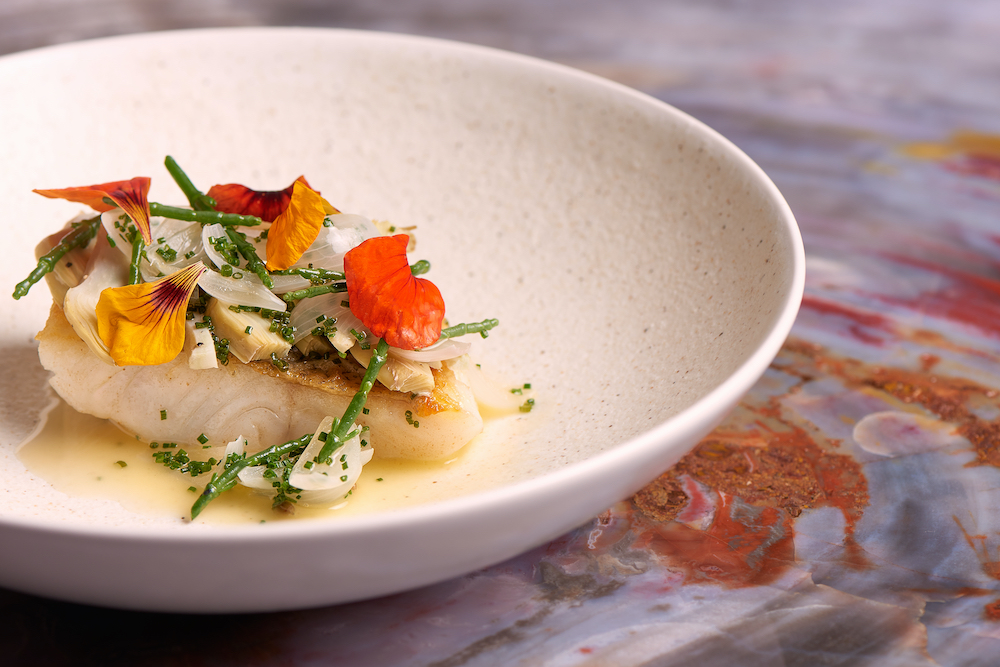
The Brazilian chef Alex Atala has done a great job celebrating indigenous Amazonian ingredients and techniques, respectfully bringing them into the fine dining space. Are you hoping to do something similar with YOPO, and, in this context, what does ‘authenticity’ mean to you?
What Alex Atala is doing is unique to him and his location. The style of food we create at YOPO is intended to showcase the best of UK ingredients, while incorporating flavours and techniques of South American cuisine. We are authentic to our surroundings and what produce is available through our responsible supply chain. We work with great suppliers like Wild Harbour from Cornwall who specialise in day boat and line caught seafood, currently on the menu we serve their wild turbot grilled in a banana leaf with a type of mole based around pumpkin seeds and a lot of spices. The grilling technique over charcoal imparts an amazing smoky flavour to the fish.
I was in Mexico recently and ate tostadas and tortillas every day, and I was reminded how joyful it is to eat with your hands, share, add what you want. How does food and the act of eating change when it has a more informal, tactile quality?
I think the simple act of eating with your hands can completely change a meal, especially adding condiments yourself. We currently serve lamb shoulder, slow cooked in adobo, which you build as tacos yourself, and guests always enjoy the dish. Eating in this way creates a more relaxed dining environment.
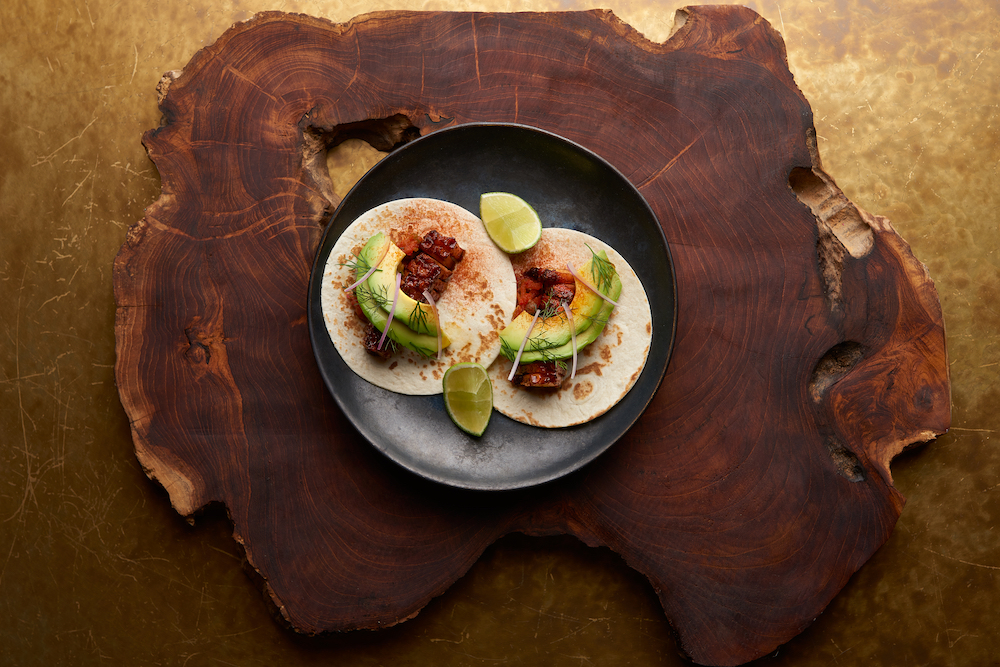
Your current menu has a lot to love on it, and there are particularly interesting and contrasting flavours and cultures in dishes like the yellow tail and aji tiradito. How are you making these unusual pairings work, pushing British produce into new geographies?
Our dishes at YOPO and The Mandrake are always created with plenty of ‘love’ – a word we actually use a lot for everything we do in the kitchen, not just cooking. I am always looking for unusual flavour combinations, but things that people may also find familiar which can be challenging to execute at times. We are currently serving a dessert of tepache sobert with mezcal granita. The pineapple tepache sobert is slightly sweet but also acidic thanks to the fermentation process used to make it. This is complemented by the earthy flavour of the mezcal granita.
What is your process for refining, building or changing the menu?
At The Mandrake, I almost always start with the raw seasonal ingredient and go from there. Refinement comes with time, some recipes always remain on the menu but change form, like the pineapple tepache (a fermented drink made from pineapple skins, raw sugar and spices from Mexico), which we now use in three different dishes, savoury and sweet.
Where else in South America would you like to travel to, and why?
I would like to visit Argentina again and in particular the vineyard of Bodega Chacra in Patagonia. Chacra was founded by Piero Incisa Della Rocchetta, in partnership with esteemed Burgundian Chardonnay producer Jean-Marc Roulot, whose wines I greatly admire. They make fantastic biodynamic Pinot Noir and Chardonnay.



